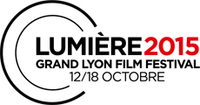RanKurosawa's adaptation
of a Shakespearean tragedy
PostED ON 23.09.2015 AT 5:59PM
EPIC SCREENINGS - In 1985, the Japanese filmmaker, to whom the Lumière festival is devoting a major retrospective, drew from the work of British playwright William Shakespeare for the second time in his career, adapting King Lear for one of his last films.
Here are four good reasons to rediscover - in its restored version - Ran, a masterpiece set in the heart of feudal Japan with merciless infighting between a powerful warlord and his three sons.

To immerse yourself in this grandiose story of 16th Century Samurais:
In a feudal Japan plagued by clan warfare, the lord Hidetora Ichimonji decides to make way for his three sons. Fearing that this decision will lead the brothers to cause his own downfall, the youngest, Saburo, confronts them to avoid it. His father disowns Saburo, while his two brothers, Taro and Jiro, join forces to permanently remove their patriarch.
For the extravagant sumptuousness of the characters' wardrobe of the epic cult classic.
This little fact underlines their importance to the work: The feature film team took two years to create the hundreds of costumes worn in Ran. Moreover, the film received the Academy Award for Best Costume Design in 1986.

Because Akira Kurosawa influenced a generation of filmmakers:
Like Sergio Leone, who adapted the Japanese director's 20th film (Yojimbo, 1961) for For a Fistful of Dollars, Akira Kurosawa inspired many filmmakers, including Clint Eastwood, who declared his filiation with the filmmaker by espousing his uncertainties and humanistic values in Letters from Iwo Jima and Mystic River. Finally, the story of The Hidden Fortress (1958), the first film shot by the Japanese filmmaker in Cinemascope, planted the seed of the idea of Star Wars in George Lucas' mind.
Because Ran is also a story of impressive numbers:
Estimated at 3h30 in its original version, Akira Kurosawa eventually reduced the film's script to 2h35 at the request of Serge Silberman, Ran's co-producer. In total, the 27th feature film by the Japanese master cost eleven million dollars, his most expensive work.
B.P.
StudioCanal 4k restoration by the laboratory Eclair Group in 2015 from the original 35mm negative and with the Japanese mixing of the period. Calibration validated by chief operator Shoji Ueda. Funded with help J-Lop. StudioCanal Distribution.
---

